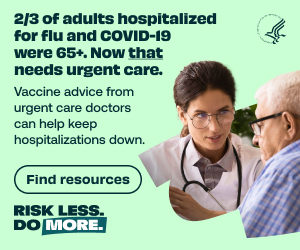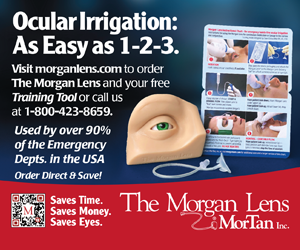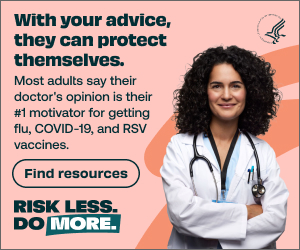 Hurricane Sandy may have had an androgynous name, but there was nothing ambiguous about the impact this “superstorm” had on New York City, where I live and work. As I pen this article 10 days after the storm, it is shocking to realized that Beth Israel, where I work as an emergency physician, still isn’t back to normal.
Hurricane Sandy may have had an androgynous name, but there was nothing ambiguous about the impact this “superstorm” had on New York City, where I live and work. As I pen this article 10 days after the storm, it is shocking to realized that Beth Israel, where I work as an emergency physician, still isn’t back to normal.

Etan Eitches, an EM resident at Beth Israel, shot the photo above from one of the higher floors of the resident dormitory across the street from the hospital. The black out zone extends north, with the lights of Midtown in the distance.
Nine lessons learned from the largest hospital evacuation in New York history
Hurricane Sandy may have had an androgynous name, but there was nothing ambiguous about the impact this “superstorm” had on New York City, where I live and work. As I pen this article 10 days after the storm, it is shocking to realized that Beth Israel, where I work as an emergency physician, still isn’t back to normal. In fact, we’re the only hospital still open in a giant blacked-out region of southern Manhattan. Downtown hospital had to be evacuated, as did the other two nearby hospitals, NYU Medical Center and the VA hospital. Then, most shockingly, Bellevue, the only level 1 trauma center anywhere around, was so damaged by the storm surge that it closed (and will remain closed for an uncertain period). The combined ED census for these facilities exceed that of Beth Israel. The strain of these hospital closures is only intensified by the fact that St. Vincent’s and Cabrini both closed within the last four years.
Data-heavy articles on the storm’s effect will be forthcoming in scholarly reports and presentations. The purpose of this early dispatch is to record our admittedly subjective impressions of the special problems we encountered and the specific lessons we have already learned.
1 Need Docs Who Can Make the Tough Calls
In a disaster situation like we experienced, there is no substitute for having a critical mass of emergency physicians available. While mid-levels are helpful, they are much less able to do the one thing that matters most when a system is at the breaking point: make the tough calls. That guy with a stent and a poor chest pain story doesn’t always need to be admitted or kept around 8 hours for 2 trops and many people with pleuritic chest pain do not require a CTA. Appropriately so, a doctor is much more likely to make such decisions than a PA or NP. Some might call this “cutting corners,” while others would say it harkens back to the way emergency medicine used to be – and perhaps ought to be – practiced. In our shop this meant extra shifts for both attendings and residents, many of whom had no power or water at their homes. As a result, many of our docs completed 12-hour shifts only to go home and walk up 12 or 20 flights of stairs to a cold apartment and no way to flush or shower.
2 Have Your Administrative Leaders Present
There is no substitute for having chairs, directors, nursing leaders and other administrators physically preset on site during a disaster. First, so much of what has to be done requires interface with other departments – and not just clinical departments. This communication falls flat when it’s left to emergency physicians because they lack the time, they don’t know the people involved and they lack the clout within the system to have services change long-standing patterns of behavior.
3 Don’t Underestimate the Value of In-House Dialysis
There is no substitute for a dialysis facility that is in the hospital and available 24/7. Basically every dialysis patient needs it to live through the week and many require it more often than that. Hemodialysis requires exactly the things that are in short supply during a time of emergency: lots of electricity, water and experienced staff. Many – maybe most – of these patients will not be able to make it at home after dialysis, even if the had water, electricity and support systems, which they don’t. Many can’t even change floors on their own. Most will need admission. Our inpatient dialysis facility did not have the capacity to dialyze all of our patients. One of our powerless outpatient dialysis facilities obtained a generator on the second full day and began to work around the clock.

4 Create an “Oxygen Bar”
There is almost no substitute for a designated location where oxygen-dependent patients who are otherwise not really sick can be gathered together. This would most likely be in, or adjacent to, the hospital as they would mostly be arriving by ambulance. Another way of dealing with this issue could be the wholesale distribution of oxygen tanks to patients in their homes. The point is that there is nothing more predictable than O2-dependent patients desiring O2 during a disaster. Plan for it.
5 The Insulin Myth
Today’s long-acting insulins “require” refrigeration, a fact that has been burned into the minds of virtually every diabetic. Many patients believe that warming to room temperature will make insulin a dangerous product and will not use it under any circumstances, so during a disaster involving power outages, expect many patients to come to the ED for their insulin and/or an insulin prescription. The truth of the matter is that all insulins are perfectly stable for 28 days at room temperature. For other biologic drugs such as Enbrel (the stability data is not readily available but is likely much shorter) there should be reminders that the window sill is a fine cooling system when the temperatures are in the 60s and below as they were for much of the storm.
6 Expect the Nebulizer-Dependent
Nebulizer-dependent patients will all come to the hospital since their home nebulizer requires electricity, which they don’t have. As with oxygen, these patients can be cohorted to an identifiable unit. Many of these patients could likely get by with the hand-held albuterol pumps, used more aggressively. The literature suggests using the albuterol pumps 4–10 times as much as the nebulizer, but amounts vary widely between individuals. Be aware that many patients with bronchospastic disease are unaware that the pump and the nebulizer deliver the same medicine.

7 There will be pharmacy problems
Handing a patient a prescription is not much good if there is no place open to get it filled, the pharmacies can’t or won’t deliver, and/or phone service is out so the patient can’t even try to order it. The most obvious answer is to have the inpatient pharmacy fill the Rx for a few days’ supply, but this is not as easy as it seems. In a disaster situation such as we experienced, the pharmacy will likely be understaffed and overworked. Laboriously filling hundreds of 3-day prescriptions is something they neither want to do nor are good at. I can attest that this did not go well at Beth Israel. Even with dozens of pharmacies open for business just a mile or two north, getting meds to patients was a big problem and it seems like one that could have been solved with a litt
le foresight and cooperation from a couple of the big chains.
8 Food, Glorious Food
Food is a big thing, both for the staff and the patients. Especially for staff working frequent and long shifts, the receipt of free food – even hospital food – implies that someone upstairs recognizes their hardship. Citywide, It is difficult to understand how food trucks and hot dog stands, usually so ubiquitous in NYC, suddenly disappeared at precisely the moment they were most needed. Whatever administrative technicality kept them off the streets could be waived with the stroke of a pen, resulting in a win-win for vendors and the populace alike.
9 The Power of a Shower
An oft-repeated sentiment was how much worse the lack of water is than the lack of electricity. Having no way to shower or bathe after a string of clinical shifts truly stinks in every sense of the word. In our ED, the SAFE (sexual assault) room has a shower. For several days it was in almost continuous use by staff who were often stranded in the hospital. We’re not sure how we would have made it without it.
The lights are on at Beth Israel but we are not out of this yet. Statistics, which we’ve avoided in this article so far, show large increases in the number of ambulances (178 a couple of days ago), the number of patients LWBS (10% some days) and the number of patients physically in the ED due to lack of inpatient capacity (more than 180 at some times). Still, the disaster was not a medical disaster, at least not at Beth Israel. And if we learn the lessons Sandy taught us, when the next one comes – and there’s always a next one – we’ll be even more prepared.
Dr. Michael Heller is the director of emergency ultrasound at Beth Israel Medical Center in New York City. Dr. Gregg Husk is the chairman of the department of emergency medicine at Beth Israel Medical Center.









